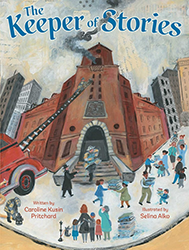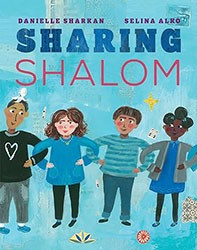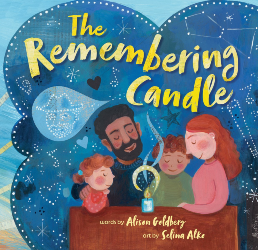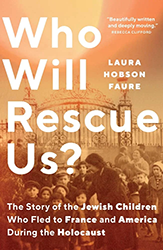This complex and beautiful picture book recreates Czech Jewish children’s journey to freedom. Fortunate enough to claim coveted places on the Kindertransport from Prague to Great Britain, they survived the war, but they lost their parents to Nazi terror. Only later in life did they learn that their benefactor had been Nicholas Winton, a Jewish-born British rescuer who refused to publicize his courageous deeds. (Winton’s legacy is the subject of another distinguished picture book: Nicky and Vera: A Quiet Hero of the Holocaust and the Children He Rescued by Peter Sís.)
Narrated from the perspective of the children, the book conveys their sense of emotional dislocation when their quiet lives and family routines are abruptly disrupted. “When we were seven or eight or nine or ten,” the children say, “Prague was everyone’s peaceful home, until it wasn’t.” As explained in the exceptionally thorough backmatter, the children telling the story represent five survivors, including Vera Gissing, who kept a diary during her ordeal.
Caren Stelson’s text is both poetic and understated, capturing how children view their lives. Prague is a welcoming city; its cafés, parks, and wintry night sky are all emblems of protection and happiness. Then the city becomes a site of violence, as synagogues are burned, Jewish businesses are destroyed, and Jewish children are confronted by bullies hurling threats. Their own parents can no longer protect them — a child’s worst nightmare. Some pages have few lines of text, while others are more detailed, allowing the story to unfold naturally and with conviction. The anecdotes are poignantly described; in one scene, a mother pulls her child from the train, hugs her one last time, and then finds the strength to push the child back through the train’s window to a safe future.
The book’s evocative pictures ensure that it will become a classic. Using acrylic paint, colored pencil, and collage, Selina Alko portrays the full range of the narrators’ world. When families enjoy a meal in a coffeehouse, bright colors highlight pastries and steaming hot drinks against a blue-and-gray background. After the Nazis invade, the black boots of soldiers march across a two-page spread, dwarfing pictures of buildings the children have drawn. Once the war has ended, and the children have returned to Prague, they can only visualize their missing parents as gray figures behind barbed wire.
In an inventive motif described in the afterword, each of the five children wears a distinct color throughout the text. Even in the emotional darkness of the train, and the tentative security of their new homes, their orange, red, dark blue, light blue, and green outfits identify them as unique individuals.
Balancing tragedy and hope, this story preserves the memory of Jewish children who found new lives despite and because of their irrevocable losses. Complete with a timeline, a list of resources, and an author’s and illustrator’s note, Stars of the Night is essential and enriching reading for both children and adults.
Emily Schneider writes about literature, feminism, and culture for Tablet, The Forward, The Horn Book, and other publications, and writes about children’s books on her blog. She has a Ph.D. in Romance Languages and Literatures.





